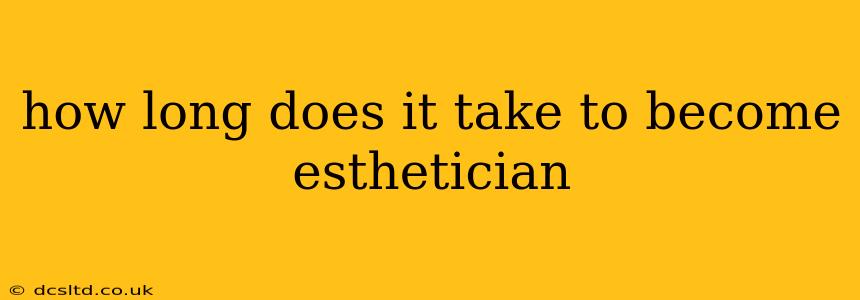The journey to becoming a licensed esthetician varies depending on your location and the specific educational path you choose. However, you can generally expect the process to take anywhere from six months to two years. This timeframe encompasses the necessary training, examinations, and licensing procedures. Let's break down the key factors influencing the duration.
What Factors Determine the Time Needed to Become an Esthetician?
Several factors influence the length of time it takes to complete your esthetician training:
-
Program Length: Esthetician programs range in length, from shorter certificate programs (often around 6-12 months) to more comprehensive associate degree programs (typically 1.5-2 years). Shorter programs may focus solely on the essential skills needed for licensing, while longer programs offer more in-depth training and potentially broader career opportunities.
-
Program Intensity: Full-time programs naturally progress faster than part-time options. Full-time programs generally require a greater time commitment each week, enabling you to complete the curriculum in a shorter period. Part-time programs provide flexibility for those juggling other responsibilities, but this comes at the cost of a longer completion timeframe.
-
Prior Experience: While not a requirement for entry into most esthetician programs, prior experience in a related field (such as cosmetology or skincare) might allow you to complete certain aspects of the curriculum more quickly. This is because you'll already possess some foundational knowledge.
-
Licensing Requirements: State licensing regulations differ, impacting the overall timeline. After completing your esthetician program, you must pass a state licensing exam. The time it takes to schedule and complete the exam varies based on your state’s regulatory board procedures and scheduling availability.
How Long Is Esthetician School?
The length of esthetician school directly relates to the type of program you choose:
-
Certificate Programs: These typically last six to twelve months, providing focused training on the essential skills for licensing. They’re a faster route, but may not offer the same breadth of knowledge as associate degree programs.
-
Associate Degree Programs: These are more comprehensive, generally lasting 18 to 24 months. They provide a wider range of skills and knowledge, potentially enhancing career prospects and earning potential.
What Are the Steps to Becoming a Licensed Esthetician?
The process generally follows these steps:
- Research and choose a program: Investigate accredited esthetician schools in your area, considering program length, cost, curriculum, and reputation.
- Complete the program: Attend classes, complete practical training, and successfully finish all required coursework.
- Pass the state licensing exam: After graduating, you'll need to pass your state's licensing examination to practice legally.
- Obtain your license: Once you've passed the exam, apply for your esthetician license through your state’s regulatory board.
What Is the Average Salary for an Esthetician?
The average salary for estheticians varies based on experience, location, and employer type. While this doesn't directly relate to the time it takes to become an esthetician, it provides helpful context for your career goals. Researching average salaries in your desired region can inform your career planning.
Are there any online esthetician programs?
While some online courses might offer parts of the esthetician curriculum, a fully online program is unlikely due to the significant hands-on training required for licensing. Most programs require substantial in-person training and practical experience.
In conclusion, the time it takes to become an esthetician is variable, but generally falls between six months and two years. The optimal path depends on individual circumstances and career aspirations. Careful planning and diligent work will pave the way for a successful career in this rewarding field.
